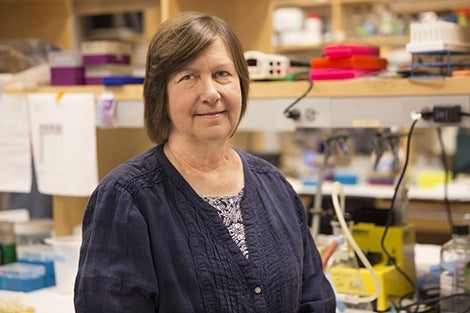May 17, 2017 – Iron deficiency is the most prevalent nutritional deficiency worldwide. Now, researchers have demonstrated that a small molecule called hinokitiol can help transport iron and improve its absorption in the body.
Hinokitiol works as a “molecular prosthetic” to facilitate iron transport, acting in the same way as a prosthetic device that helps someone who has lost a limb. The researchers think that using this kind of chemical tool could also potentially improve other protein deficiencies that cause diseases such as anemias, cystic fibrosis, or certain types of heart disease.
Investigators from Harvard T.H. Chan School of Public Health, the University of Illinois at Urbana-Champaign, Brigham and Women’s Hospital, and Northeastern University found that hinokitiol, which is a chemical derived from cypress trees, can restore iron transport in animals and in human cells when proteins that normally do the job are missing, a condition that can cause severe anemia. This is the first time that researchers have been able to show that it’s possible to restore protein function using small molecules.
The study was published May 12, 2017 in the journal Science.
“The idea of molecular prosthetics as a chemical tool to replace dysfunctional proteins raises the possibility that many genetic disorders of iron metabolism may now be open for new approaches to resolve iron deficiency and overload,” said Marianne Wessling-Resnick, professor of nutritional chemistry at Harvard Chan School and a co-lead author of the study.
In a healthy person, specific proteins transport iron across cell membranes to support essential functions. For example, red blood cells rely on iron to create hemoglobin, the protein required to transport oxygen in the body. If the iron-transporting proteins are missing or defective, iron can’t cross membranes, resulting in anemia.
The researchers tested hinokitiol in mice, rats, zebrafish, and in human cells that were missing iron-transport proteins, and showed that hinokitiol could package iron atoms in a way that facilitated transport across membranes. They found that hinokitiol restored iron uptake in the intestines of mice and rats with genetic defects in iron-transport proteins, and that adding it to the tank of anemic zebrafish prompted hemoglobin production.
The study was a collaboration with Martin Burke of the University of Illinois at Urbana-Champaign, who conceptualized the use of “molecular prosthetics” to alleviate disease. Wessling-Resnick’s research group—which studies genetic disorders of iron metabolism—provided proof-of-concept that hinokitiol could improve iron absorption in mice.
Former members of the Wessling-Resnick lab who collaborated on the project include Jongham Kim, currently at Northeastern University, and Young Ah Seo, now at the University of Michigan. The work was funded by NIH grants R01 ES0146380 and R01 DK064750.
photo: Sarah Sholes
Read the study abstract: Restored iron transport by a small molecule promotes absorption and hemoglobinization in animals
Read an article in Chemical & Engineering News: Molecular prosthetic moves iron into, out of, and within cells
